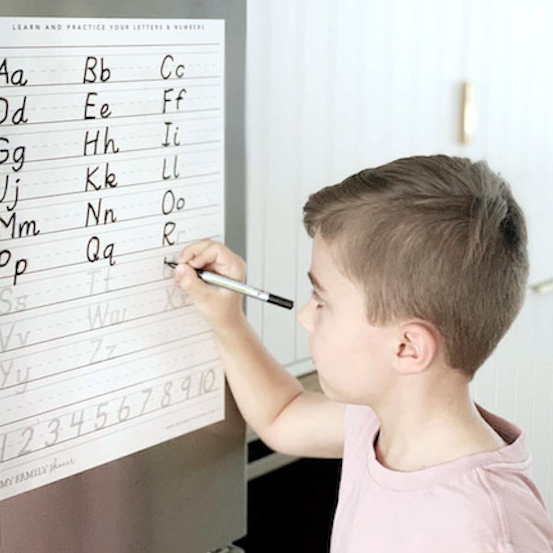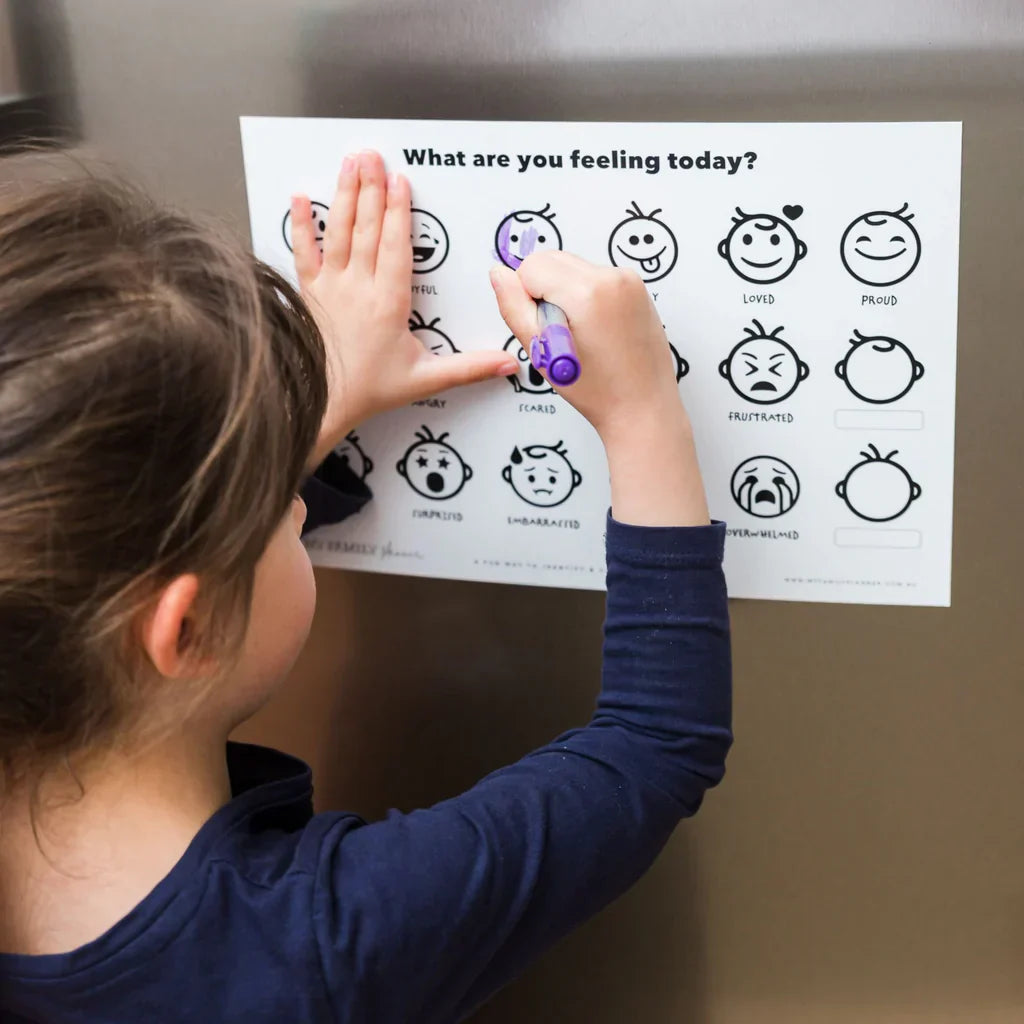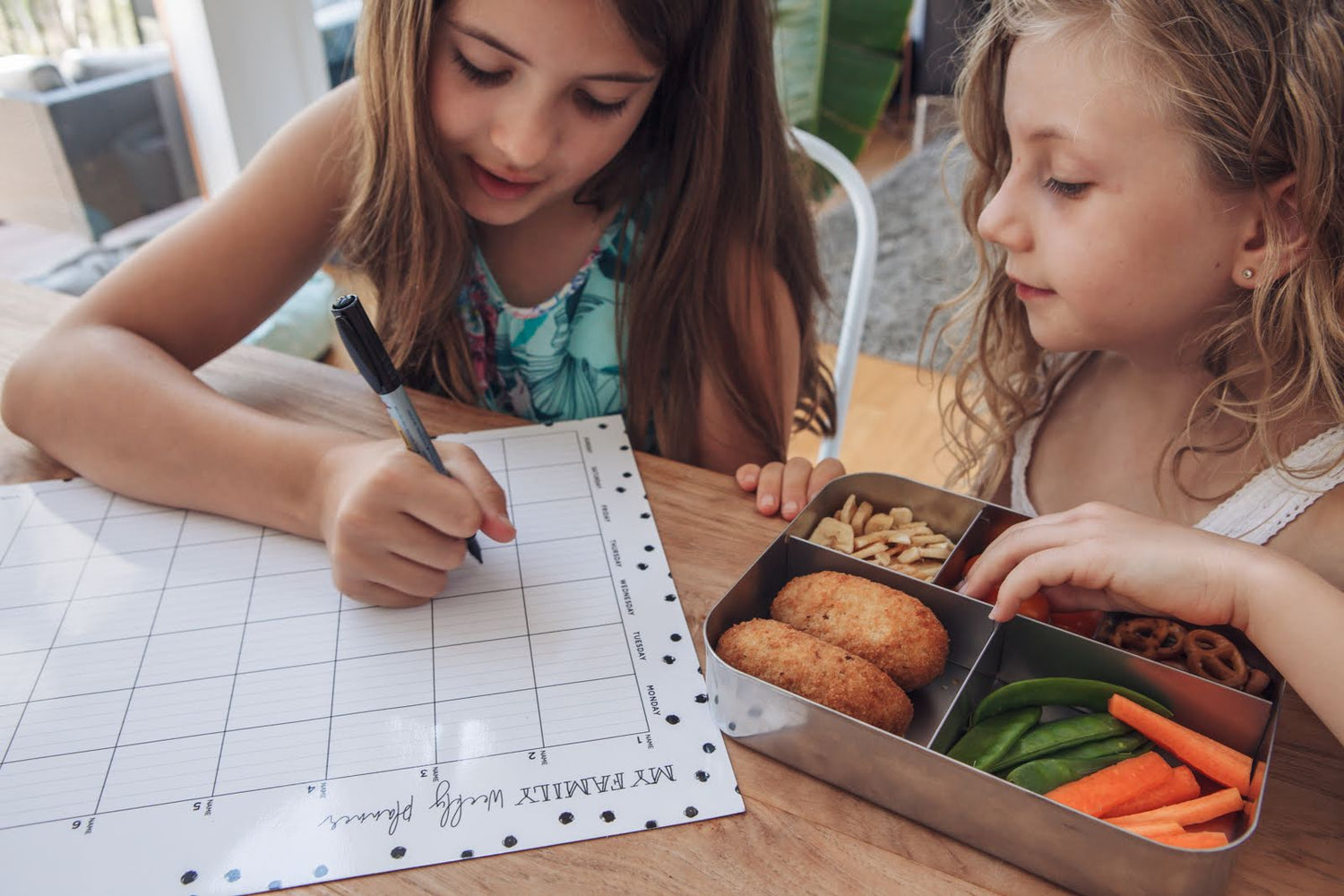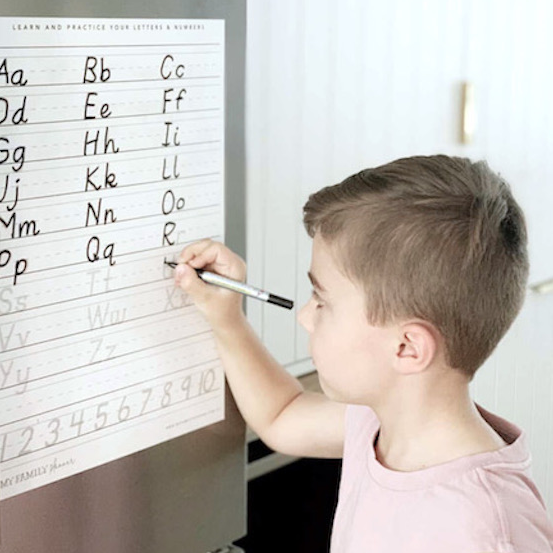Well, it’s finally here: the cozy cloisters of preschool life are closing while the bright lights of primary school flick on. Your little one is about to begin an incredibly rewarding adventure, and you want to ensure they walk into their first classroom with confidence and excitement. So how can we best prepare our preschoolers for this transition and give them the best chance to succeed in their learning?
Having been a primary school teacher for over 10 years now, I’ve seen a great variety of students walk through my door, some prepared for school and some not. Let me tell you – it makes the world of difference being in the former camp, for both student and parent!
To help you help your child, here are my top 5 ways to prepare your little one for school:

You’ve heard it before, but let’s say it one more time for impact: reading is seriously important! Yes, your child will learn to read at school, but they’re also at a major advantage if they enter the classroom having secured the reading basics. But how exactly can you best help your preschooler in their learning-to-read journey?
- Read to your child every day, even if just for 5 minutes.
- Involve your child by pointing to the pictures, saying a few words together and having them turn the pages.
- Read signs aloud when you’re out and about – road signs, public transport signs, shopfronts and billboards are great.
- Begin letter and sound recognition – the My Family Planner Alphabet Writing Practice Sheets are perfect for this.
- Practice simple word recognition – keep a My Family Planner High Frequency Word List handy.
- Confidence counts! Encouraging your child to see themselves as a reader, even if they’re not quite there yet, will foster determination and willingness.
We’ve said the words, now let’s count the numbers. Mathematics is another key element to classroom learning foundations, but finding the time to fit numeracy teaching into our already jam-packed schedules is another story. The easiest way to do so is to incorporate numeracy teaching and learning into everyday tasks:
- Collect and count fruit at the supermarket.
- Count eggs when cooking or fruit in a fruit bowl.
- Count out small snacks like cheese cubes, strawberries and carrot sticks.
- Count pegs when hanging out the washing.
- Count bath toys as you add them to the bath.
- Do a countdown before you leave the house.
- Count fingers and toes during playtime.
- Sing number rhymes like ‘One, two, buckle my shoe,’ ‘5 little speckled frogs’ and ‘1, 2, 3, 4, 5, once I caught a fish alive,’ to name a few.
- Encourage one-to-one correspondence by encouraging your child to count each object only once. To assist, guide your child’s finger to point and count correctly and separate objects into grids or little compartments, like pebbles into empty egg cartons.
- If your child needs help with something non-urgent, ask them to count to 10 or 20 and then you’ll come and help. This one also gives you a bit of extra time if you’re busy with something!

3. Get That Motor Running
It’s time for fine motor skills! These involve activities which require small muscles in the hands. Honing your preschooler’s fine motor skills can hugely benefit things like handwriting and lays the foundation for legibility and neatness. Here are some great activities to assist with developing fine motor skills:
- Practice with writing charts like the My Family Planner Handwriting Practice Worksheet.
- Use the ‘pincher grip’ (thumb and index finger) to pick up small objects.
- Link paper clips together – coloured ones are most appealing.
- Use tweezers or kids tongs to pick up various sized objects.
- Use safety scissors to cut a variety of shapes and lines.
- Thread laces or pipe cleaners together.
- Construct with Lego – just don’t step on it!
- Manipulate play dough into different shapes.
- Paint with small brushes or cotton buds.
- Do up buttons and zips.
- Screw bolts and nuts.
- Peel off stickers – using fruit is a great option here.
4. Give Your Child Wings
Now for the hard part – it’s time to let your child fly on their own. As protective parents, we can all too easily fall into the habit of doing everything for our kids. If we want to help them in the long run, however, we need to resist the urge to over-nurture and rather encourage their independence. Sure, they might get stuck sometimes, but this challenge is both necessary and rewarding for their confidence. Here are some things your preschooler can on their own to foster independence:
- Open packets, especially snacks they may have in school lunchboxes.
- Peel fruit like mandarins and bananas.
- Pack and carry their own backpack.
- Retrieve items from their backpack when asked.
- Learn technology basics like how to log on to a computer with username and password and how to navigate apps on an iPad.
- Follow simple instructions like walking to a direct spot and sitting in a certain chair.
- Learn to tie shoelaces (but don’t worry if this isn’t mastered by school age – we teachers are very used to doing up laces everyday).
- Use a glue stick and scissors.
- Dress in a school uniform when purchased.
- Brush their own hair.
- Push their chair under the table.
- Let them help you with chores, even if done a little incorrectly.
- Open, fill and drink from their own water bottle.
- Put on their hat when going outside to play.
5. Make Feelings Matter
Last but not least, let’s talk about feelings. Your child’s social-emotional wellbeing is vital to ensuring a happy and successful transition from preschool to primary. We all want our children to be happy at school, but how can we best prepare and maintain their emotions during this big step?
- Talk about different emotions they may feel at school.
- Talk about how other children may feel.
- Help your child to identify emotions with a visual chart, like the My Family Planner Feelings Chart.
- Provide different scenarios, like ‘How do you think you will feel on the first day of school?’ and ‘What will it feel like to meet a new friend?’
- Outline strategies to help them, like ‘What could you do if you’re angry? You could take deep breaths, count to 10 or think of a happy place.’
- Talk about positivity to encourage resilience – learn some positive words or phrases they can easily grasp and remember when upset.
- Use bedtime as a chance to reflect on feelings experienced during the day.
In The End…
Okay, let’s face it: we all want our children to be star students! Effectively preparing our preschoolers for their exciting school journey will give them a definite advantage (and will no doubt impress their teachers). With these tips, you can send your little one to school knowing you have best prepared and excited them for one of life’s most significant steps. Oh, and you can rest a little easier knowing they’re truly ready for school and all its adventures.
Which of these ideas have you found most helpful? Let me know in the comments!
Written by Natalie Barlow





